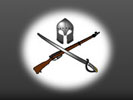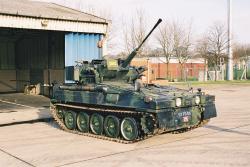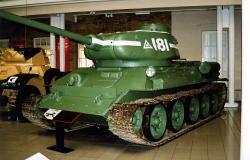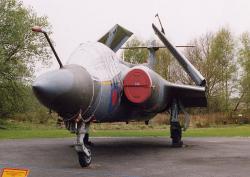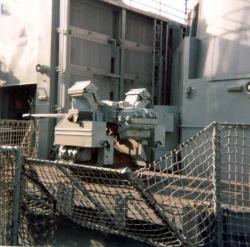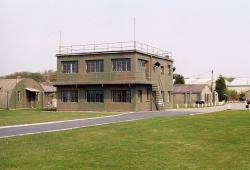Translate this Page
Battle of Tug Argan
Battle Name : Battle of Tug Argan
Date(s) : 10 August 1940 - 15 August 1940
Part of : Second World War , Middle East and Africa , East African Campaign 1940-1942 ,
Outcome : A victory for Italian and Colonial Forces over British and Imperial Forces
Type of battle : Land
Location
Somaliland Protectorate, east Africa.
More details
In May 1940 it appeared that the Italians were about to enter the War on the side of the Axis, and reinforcements were despatched from the Middle East and East Africa to Aden and British Somaliland. By 15th May 1st Bn Northern Rhodesian Regt (1NRR) had arrived in Berbera , Somaliland Protectorate to support the resident force of Somaliland Camel Corps and a Coy of 1KAR. Against this force of about 1500 the Italians could field an Army of 270,000 mainly colonial troops but including some Black Shirt Battalions and about 350 aircraft.
Until the fall of France the French Forces in Djibouti were cooperating with the British and in the north protected the Jirreh Pass which covered the approach to the small Port of Zeila.. General Nasi the Italian Commander of the force for the Invasion planned a three pronged assault with, in the north west, General Bertoli commanding eight infantry Battalions ( which included two BlackShirt units of Italian metropolitan troops and a machine gun battalion to strike at Zeila and open the way for General Passerone with two infantry battalions and artillery to exploit eastward along the coast to Berbera via Bulhar. In the east General Bertello from the area of Gabredare would strike at Odweina and Burao on his way to the Sheikh Pass and Berbera with three battalions and a camel pack light artillery battery. In the centre the main force of four brigades with the armour and most of the artillery under General Simone would make for Hargeisa the capital of the Somaliland Protectorate and take the main road to Berbera. Colonel A.R. Chater RM the Commander of Somaliland Camel Corps (SCC) was raised to the rank of Brigadier on the arrival of 1NRR and 3/15th Punjab Regt. and given overall command. He realised that the country was virtually indefensible against such an enemy force and chose to set up a delaying position at the Tug Argan Gap. The Italians commenced operations on 3rd August and by the 5th had occupied Zeila. The first contact was also made with a det. SCC on that day in the area of Hargeisa. There was considerable air activity and De Simone did not continue his advance from Hargeisa until 8th August. Two days later the first contacts with the main British defensive position were made. The 2nd Black Watch arrived from Aden on 10th August and was hurried into reserve at Laferug some twenty miles south of Berbera. General Godwin-Austen also arrived on that day to take over command. On 11th August the Italians tested the British strength with air attacks at 7.30am followed by four hours of artillery bombardment. At Midday the Italian XVBde pushed against 1NNR and were repulsed. Later at about 4.00pm 1NRR were forced off their position on Mill Hill, however the line held. Two days later 13th August XV Bde infiltrated Punjab Hill and elements ambushed a Black Watch guarded re-supply party. 2 KAR were unable to restore the situation and their CO was summarily sacked. However the Italians had made little impression on 3/15th Punjab. On 14th August XV Italian Bde having suffered considerable casualties was withdrawn into reserve and and XIII Bde took its place. General Passerone moving along the coast road from Zeila was straffed and bombarded by the RAF and Naval forces from Aden. General Godwin-Austen realising that the situation could quickly become untenable sought permission from HQ Middle East for a complete evacuation. This was granted . The final assault by De Simone on 15th August resulted in his capture of Observation Hill by 7.00pm after a long days fighting. After dark however all British forces withdrew through 2Black Watch and 2 KAR to embark at Berbera. On 16th August General Passerone had reached Bulhar and De Simone was regrouping. De Simone continued his advance on 17th August with LXX Bde leading with his armour but were stopped by 2 Black Watch and 2KAR at Laferug. In his report De Simone stated that he was “halted by intense fire of machine guns anti- tank guns, bombing and artillery.” The Black Watch record of this action was that they “relied on bayonets to drive back the leading Italian troops.” On the 18th August “ Black Watch and the KAR disengaged and slipped into Berbera and aboard ships. The Italians occupied Berbera on 19thAugust. Act Capt Eric Charles Twelves Wilson East Surrey Regt attached Somaliland Camel Corps was awarded the VC for action whilst commanding the Machine Gun Company on Observation Hill at the Battle of Tug Argan
British Forces successfully evacuated. Plan of Battle p69 in "KAR A History of the King's African Rifles," Malcom Page, Leo Cooper 1989. Citation for VC: Capt Charles Twelves Wilson, VC. East Surry Regt att Somaliland Camel Corps “For most conspicuous gallantry on active service in Somaliland. Captain Wilson was in command of machinegun posts manned by Somali soldiers in the key position of Observation Hill, a defended post in the defensive organisation of the Tug Argan Gap in British Somaliland. The enemy attacked Observation Hill on 11th August 1940. Captain Wilson and Somali gunners under his command beat off the attack and opened fire on the enemy troops attacking Mill Hill, another post within his range. He inflicted such heavy casualties that the enemy, determined to put his guns out of action, brought up a pack battery to within seven hundred yards, and scored two direct hits through the loopholes of his defences which, bursting within the post, wounded Captain Wilson severely in the right shoulder and in the left eye, several of his team also being wounded. His guns were blown off their stands but he repaired and replaced them and, regardless of his wounds, carried on, while his Somali sergeant was killed beside him. On 12th and 14th August, the enemy again concentrated field artillery fire on Captain Wilson’s guns, but he continued, with his wounds untended, to man them. On 15th August two of his machine-gun posts were blown to pieces, yet Captain Wilson, now suffering from malaria in addition to his wounds, still kept his own post in action. The enemy finally over-ran the post at 5pm on the 15th August when Captain Wilson, fighting to the last, was killed”. Dates of Acts of Bravery 11th-15th August 1940 Tug Argan Gap, British Somaliland London Gazette 14th October 1940 After note: He was presented with his posthumous award after his release from captivity in 1941.
Also during this battle, Sgt A.A.T. Finn, 1NRR was awarded the DCM.
